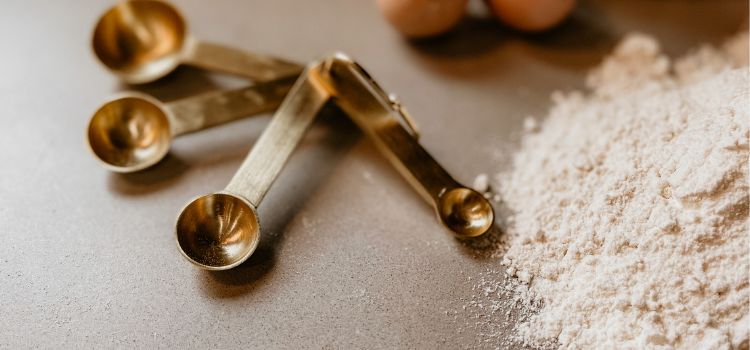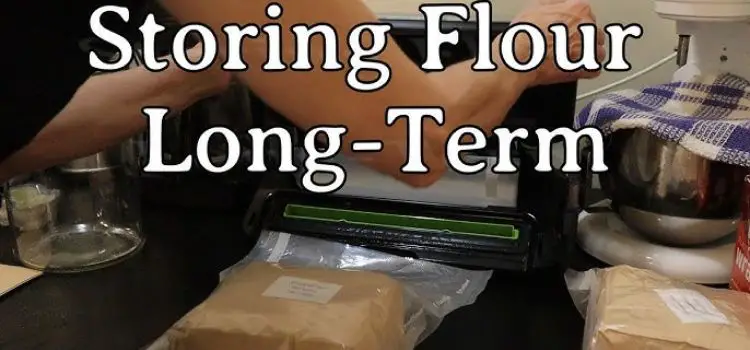As an Amazon Associate, I earn from qualifying purchases

Flour is a fundamental ingredient in kitchens around the world, serving as the backbone for countless recipes, from bread and pastries to sauces and coatings. Given its importance, ensuring that flour remains fresh and usable over time is a priority for many home cooks and bakers. One effective method for extending the shelf life of flour is vacuum sealing.
This technique involves removing air from the storage environment, thereby reducing the risk of spoilage and prolonging freshness. Understanding how long vacuum-sealed flour lasts is essential for anyone looking to optimize their food storage practices and minimize waste.
Factors Affecting Shelf Life
Several factors influence the shelf life of vacuum-sealed flour, and being aware of these can help you make informed decisions about storage.
Type of Flour
The type of flour you are storing plays a significant role in its shelf life. All-purpose flour, which is refined and has a lower oil content, generally lasts longer than whole wheat flour. Whole wheat flour contains more natural oils, which can lead to quicker spoilage if not stored properly. Understanding the differences between flour types can help you tailor your storage methods accordingly.
Storage Conditions and Environment
The environment in which you store your vacuum-sealed flour is crucial. Flour should be kept in a cool, dry place, away from direct sunlight and temperature fluctuations. Excessive heat or moisture can compromise the vacuum seal and lead to spoilage. A pantry or a dedicated food storage area with stable conditions is ideal for maintaining the quality of your flour.
Quality of Vacuum Sealing Equipment
The effectiveness of your vacuum sealing equipment and the quality of the materials used can significantly impact the shelf life of your flour. High-quality vacuum sealers that create a strong, airtight seal are more effective at preserving flour than lower-quality options. Additionally, using durable vacuum bags designed for long-term storage can further enhance preservation by providing a robust barrier against air and moisture.
Typical Shelf Life of Vacuum-Sealed Flour
Understanding the typical shelf life of vacuum-sealed flour can help you plan your storage strategies effectively.
- Expected Shelf Life Under Optimal Conditions : When stored under optimal conditions, vacuum-sealed all-purpose flour can last up to 2 years or more. Whole wheat flour, due to its higher oil content, typically lasts around 1 year when vacuum-sealed. The vacuum sealing process significantly slows down the oxidation process, which is a primary cause of spoilage, thereby extending the flour’s usability.
- Comparison with Other Storage Methods: Compared to other storage methods, such as keeping flour in its original packaging or using airtight containers, vacuum sealing offers a superior shelf life. Traditional methods might keep flour fresh for several months, but vacuum sealing extends this period significantly, making it a preferred choice for long-term storage.
Tips for Maximizing Freshness

To get the most out of your vacuum-sealed flour, consider these tips for maximizing freshness:
- Proper Vacuum Sealing Techniques: Ensuring a proper seal is crucial for maintaining freshness. Make sure the vacuum sealer is functioning correctly and that the bags are free from any punctures or tears. Double-sealing the bags can provide an extra layer of protection against air leaks, further preserving the flour’s quality.
- Recommendations for Ideal Storage Environments: Store vacuum-sealed flour in a cool, dark place to prevent exposure to light and heat, which can degrade the quality. If possible, keep the flour in a dedicated food storage area with stable conditions to further extend its shelf life, especially if you live in a warm or humid climate.
- Importance of Using High-Quality Vacuum Bags: Invest in high-quality vacuum bags that are specifically designed for long-term food storage. These bags are typically thicker and more durable, providing a better barrier against air and moisture. Using high-quality materials can make a significant difference in the longevity of your vacuum-sealed flour.
Signs of Spoilage
Even with the best practices, it’s essential to recognize the signs of spoilage to ensure safe consumption.
- Visual Indicators of Spoiled Flour: Spoiled flour may exhibit discoloration, such as yellowing or the presence of dark spots. If you notice any changes in the flour’s appearance, it’s best to err on the side of caution and discard it.
- Changes in Smell and Texture: A sour or off smell is a strong sign that the flour has spoiled. Additionally, if the texture becomes clumpy or develops an unusual consistency, it’s advisable to dispose of the flour to avoid potential health risks.
- Safety Guidelines for Using Flour: Always prioritize safety when it comes to using flour. If you notice any signs of spoilage, it’s safer to discard the flour rather than risk foodborne illness. Regularly checking the condition of your vacuum-sealed flour can help you catch any issues early and maintain a safe kitchen environment.
Conclusion
Vacuum-sealed flour offers a convenient and effective way to extend the shelf life of this essential kitchen staple. By understanding the factors that affect shelf life and following best practices for sealing and storage, you can ensure your flour remains fresh and usable for an extended period.
Regularly checking for signs of spoilage and using high-quality materials will further enhance your flour’s longevity. Whether you’re an avid baker or simply looking to optimize your food storage, these tips will help you maintain the quality and safety of your flour for months to come.
FAQ
Does flour go bad if vacuum sealed?
Vacuum-sealed flour can remain fresh for significantly longer than flour stored in standard packaging. Although vacuum sealing drastically slows spoilage by removing air, flour can still go bad over time, especially if not stored in a cool, dry place. Regularly check for signs of spoilage.
Can you vacuum seal flour for long-term storage?
Yes, vacuum sealing is an effective method for long-term flour storage. By eliminating air, vacuum sealing helps preserve flour’s freshness and prevent spoilage. Ensure the flour is stored in a cool, dark environment to maximize its shelf life, potentially lasting 1 to 2 years or more.
Can you vacuum seal all-purpose flour?
All-purpose flour can be vacuum sealed to extend its shelf life considerably. This process removes air, preventing oxidation and spoilage. When vacuum sealed and stored in optimal conditions, all-purpose flour can last up to 2 years, making it a practical option for long-term storage.
As an Amazon Associate, I earn from qualifying purchases